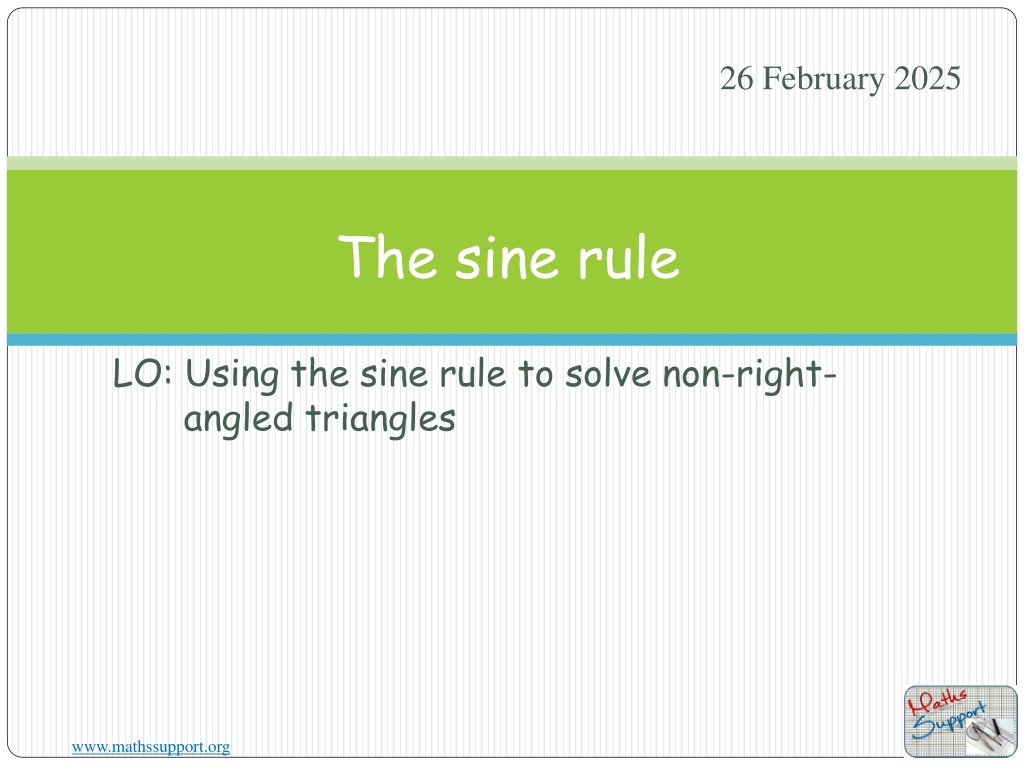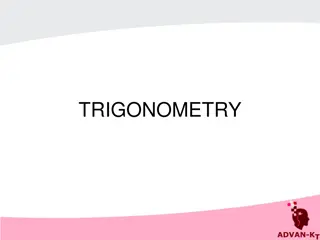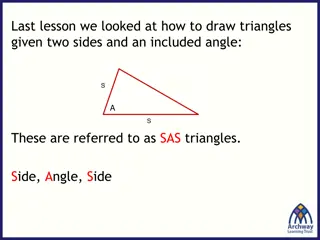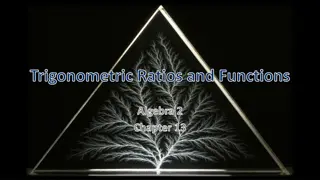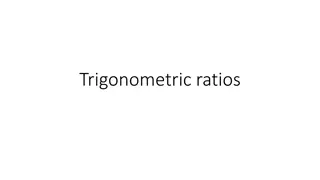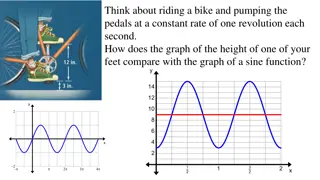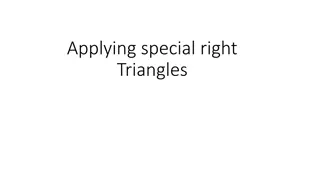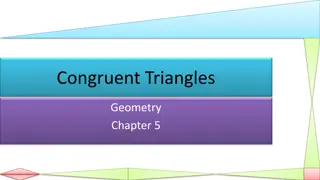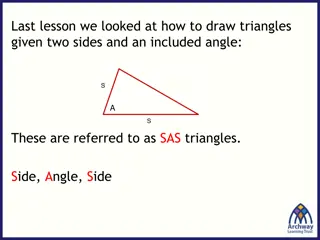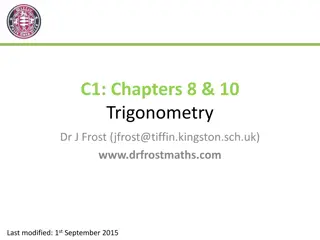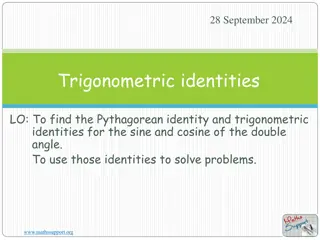The Sine Rule for Solving Triangles
The Sine Rule in trigonometry allows for solving non-right-angled triangles by relating the ratios of the sine of angles to the lengths of corresponding sides. This method is essential in finding missing angles or side lengths in triangles, providing a systematic approach for trigonometric calculations. Explore how to apply the Sine Rule to solve triangles efficiently and accurately with practical examples and step-by-step explanations.
Download Presentation

Please find below an Image/Link to download the presentation.
The content on the website is provided AS IS for your information and personal use only. It may not be sold, licensed, or shared on other websites without obtaining consent from the author.If you encounter any issues during the download, it is possible that the publisher has removed the file from their server.
You are allowed to download the files provided on this website for personal or commercial use, subject to the condition that they are used lawfully. All files are the property of their respective owners.
The content on the website is provided AS IS for your information and personal use only. It may not be sold, licensed, or shared on other websites without obtaining consent from the author.
E N D
Presentation Transcript
26 February 2025 The sine rule LO: Using the sine rule to solve non-right- angled triangles www.mathssupport.org
The sine rule You can use trigonometry to solve triangles that are not right-angled. Look at the triangle ABC. perpendicular to AC. In the right-angled triangle ABD. ? ? This gives h = c sin A In the right-angled triangle BCD. ? ? This gives h = a sin C Equate the values of h to give = a sin C c sin A The altitude (height), h of the B triangle is BD a c h ???? = C A b D Rearranging this equation gives sin? ? The ratios of the sine of each angle to the length of the opposite side are equal ???? = =sin? ? www.mathssupport.org
sin? ? =sin? =sin? The sine rule ? ? You can use trigonometry to solve triangles that are not right-angled. Look at the triangle ABC. perpendicular to AB. In the right-angled triangle ACE. ? ? This gives h = b sin A In the right-angled triangle BCE. ? ? This gives h = a sin B Equate the values of h to give = a sin B b sin A Now draw the altitude (height), h B from C to E E a c h ???? = C A b Rearranging this equation gives sin? ? The ratios of the sine of each angle to the length of the opposite side are equal ???? = =sin? ? www.mathssupport.org
The sine rule The sine rule is a method to calculate sides and angles of any triangle. It is useful for finding the length of one side when all the angles and one other side are known, or finding an angle when two sides and one other angle are known To find a side, use the sine rule written as For any triangle ABC: C b c a = = b a sin B sin C sin A or A B To find an angle, use the sine rule written as c Where ais the length of the side opposite ? bis the length of the side opposite ? cis the length of the side opposite ? sin A a sin B b sin C c = = www.mathssupport.org
Using the sine rule to find side lengths If we are given two angles in a triangle and the length of a side opposite one of the angles, we can use the sine rule to find the length of the side opposite the other angle. For example: Find the length of side a B Using the sine rule: 39 7 a a = sin 39 sin 118 118 7 sin 118 sin 39 a = C A 7 cm a = 9.82 cm (to 3 s.f.) www.mathssupport.org
Using the sine rule to find side lengths Find the length of side x, rounded to 2 decimal places Using the sine rule: 18 x A 18 m sin 113 = sin 41 C 113 18 sin 113 sin 41 41 x = x B x 25.26 m (to 2 dp) www.mathssupport.org
Using the sine rule to find angles If we are given two side lengths in a triangle and the angle opposite one of the given sides, we can use the sine rule to find the angle opposite the other given side. For example: Find the angle at A Using the sine rule: sin A 9.4 C sin 98 = 14 14 cm 9.4 cm 9.4 sin 98 14 sin A = 9.4 sin 98 14 98 A B sin 1 A = A = 41.7 (to 3 s.f.) www.mathssupport.org
Using the sine rule to find angles The following diagram shows PQR, find ? ??. P Using the sine rule: sin ? ?? sin 45 7 = 7 cm 9 9 sin 45 7 sin ? ?? = 45 Q R 9 cm 9 sin 45 7 sin 1 ? ?? = Finding angle ? ?? ? ??= 180 45 65.4 ? ??= 65.4 (to 3 s.f.) ? ??= 69.6 www.mathssupport.org
Thank you for using resources from A close up of a cage Description automatically generated For more resources visit our website https://www.mathssupport.org If you have a special request, drop us an email info@mathssupport.org www.mathssupport.org
